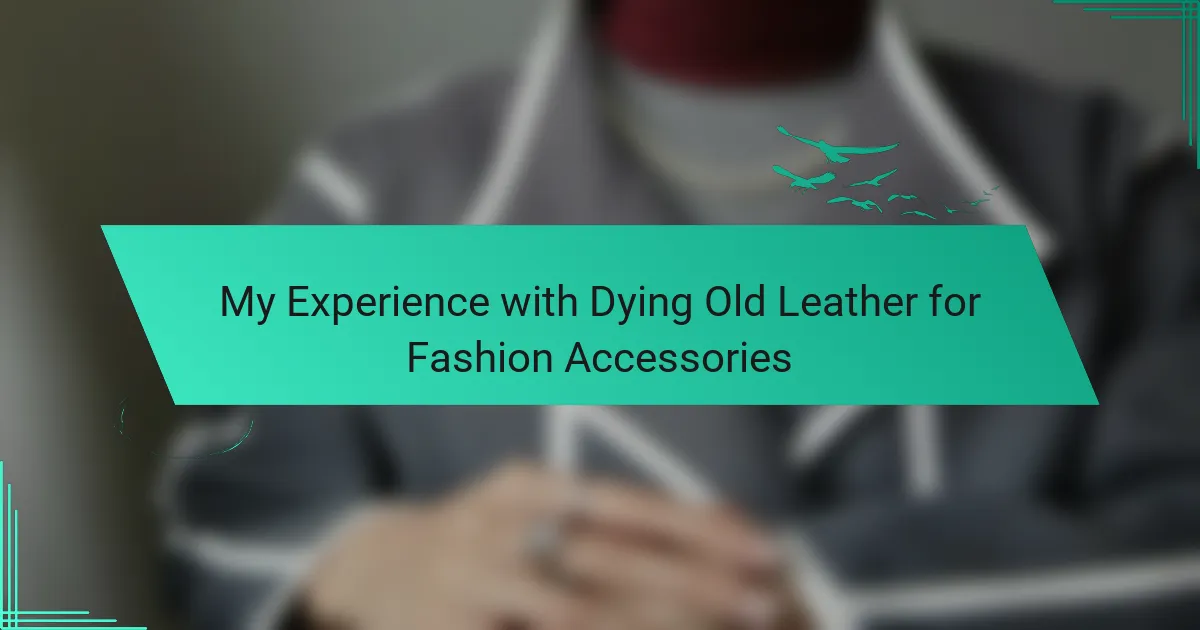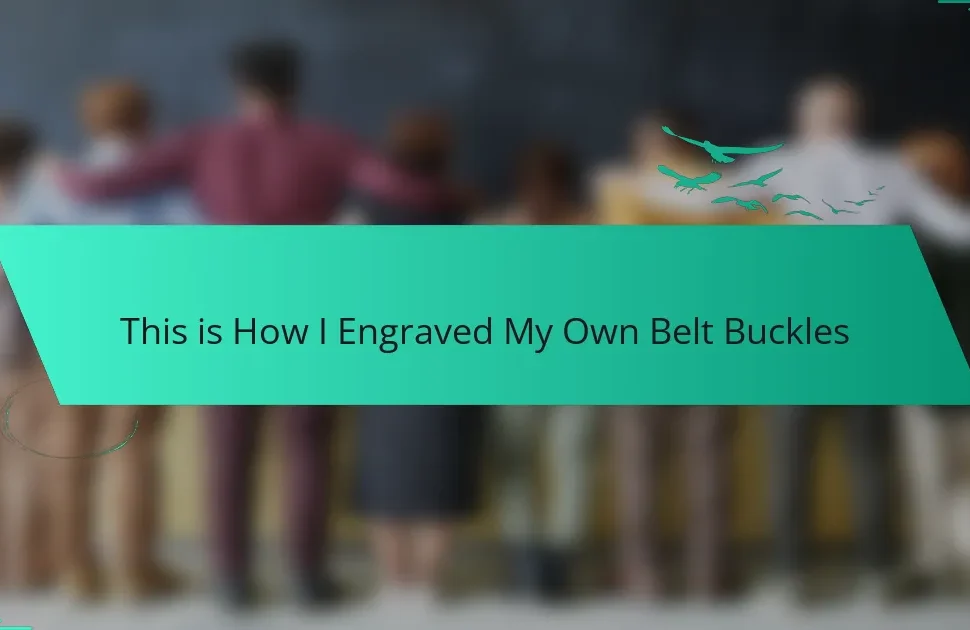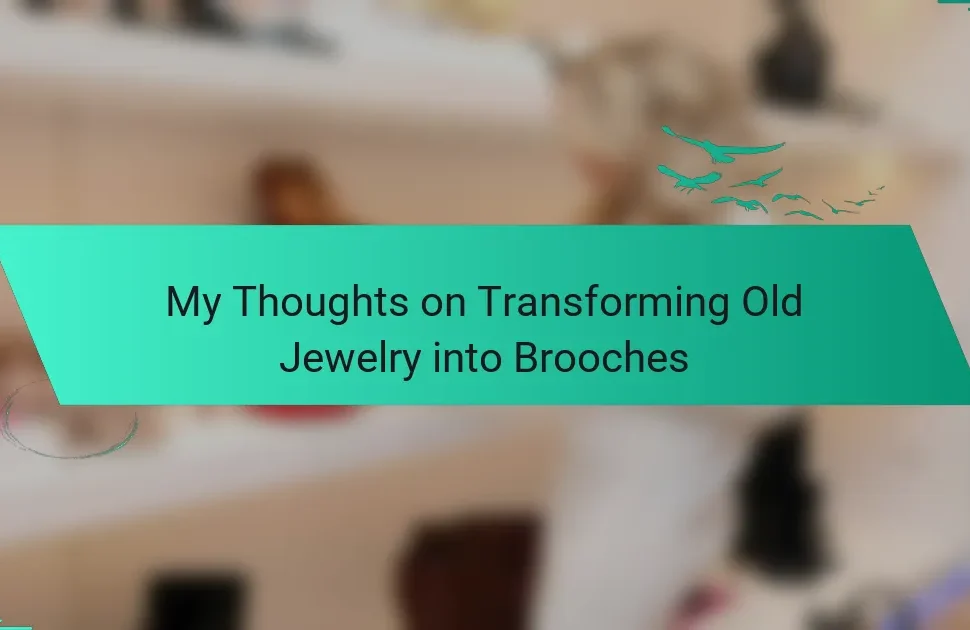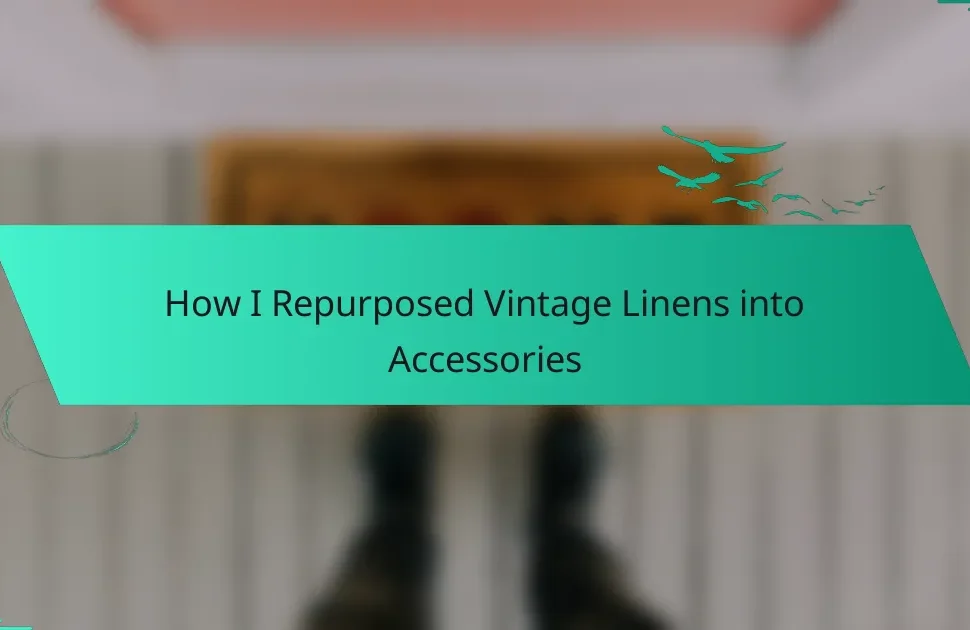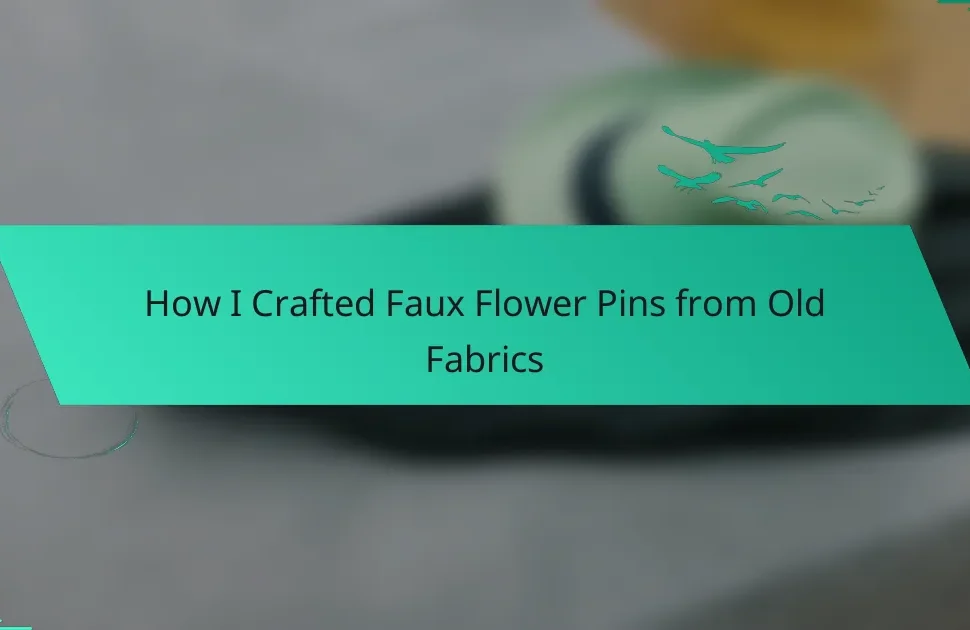Key takeaways
- Vintage fashion DIY promotes sustainability by repurposing items, reduces waste, and encourages creativity.
- Upcycling fashion accessories strengthens emotional connections and allows for individual expression in style.
- Choosing the right dye and preparing leather properly are crucial for successful dyeing results.
- Regular maintenance, such as conditioning and proper storage, helps keep dyed leather accessories vibrant and lasting.
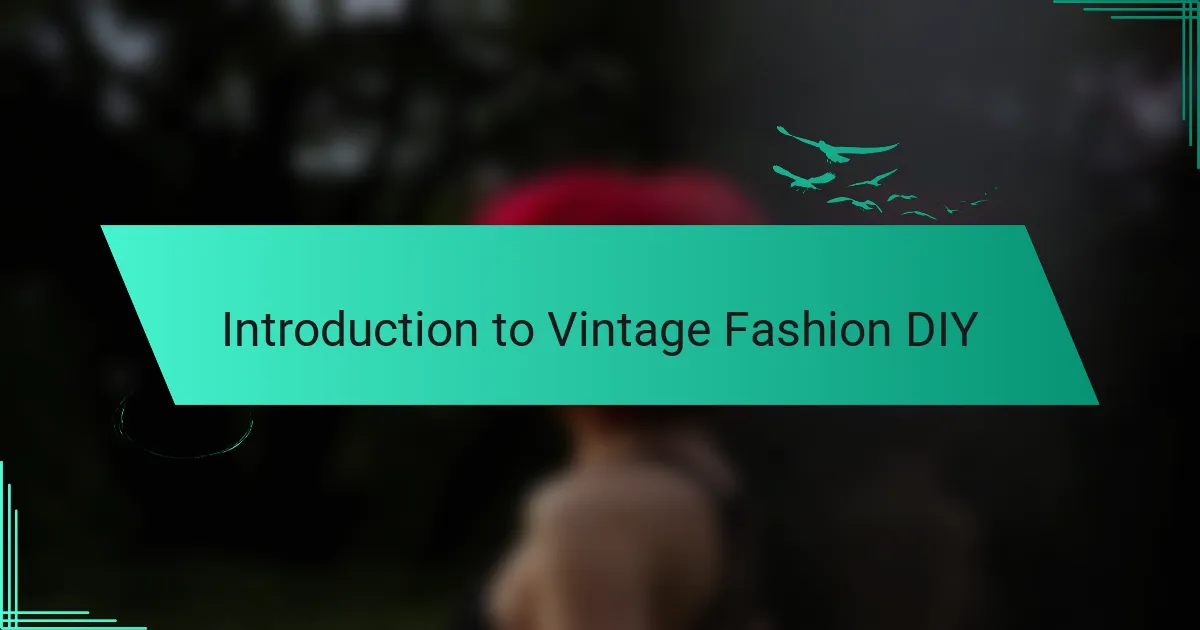
Introduction to Vintage Fashion DIY
Vintage fashion DIY is all about breathing new life into old pieces, and there’s something incredibly fulfilling about transforming a tired leather accessory into a stylish statement piece. I remember my first attempt at dying a worn-out leather handbag; it was like unearthing a lost treasure. The process not only revived the bag but also sparked my passion for creating unique, personalized fashion items.
Engaging in vintage fashion DIY opens the door to endless creativity. It encourages us to think outside the box and explore new techniques, all while being environmentally conscious. Here’s a quick overview of what makes this journey so captivating:
- Sustainability: Repurposing leather reduces waste and promotes eco-friendly practices.
- Creativity: Each project allows for individual expression and style.
- Skill-building: Learning new techniques enhances your crafting skills and confidence.
- Cost-effective: Revamping old items is often cheaper than purchasing new, trendy accessories.
- Emotional connection: Transforming something old often carries sentimental value, turning it into a cherished piece with a story.
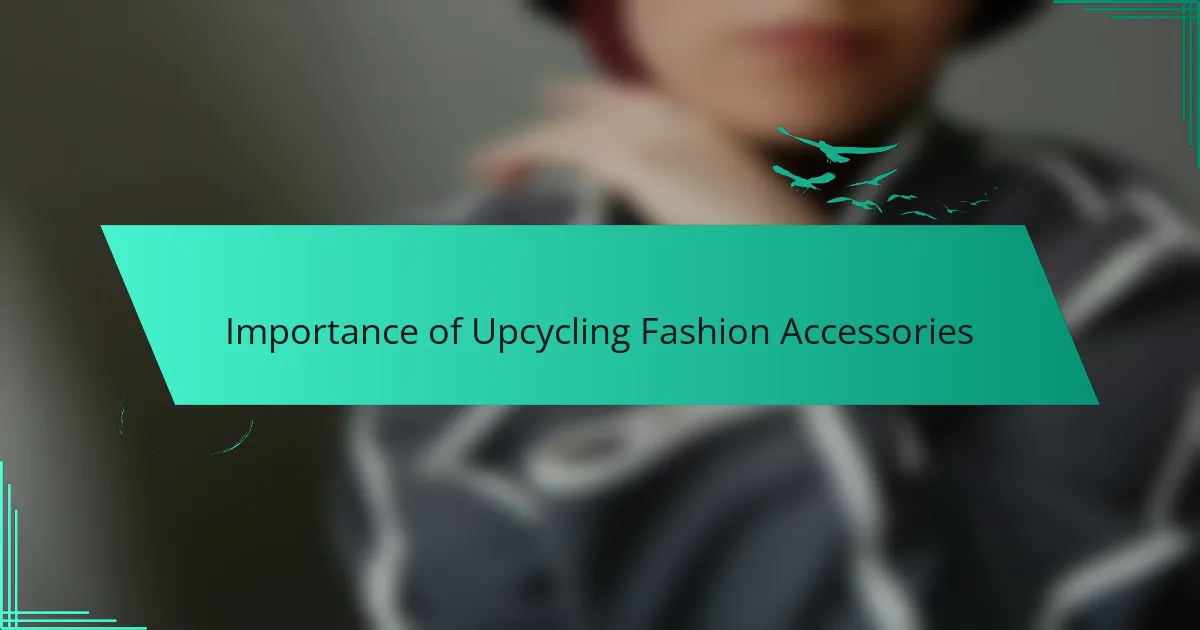
Importance of Upcycling Fashion Accessories
Upcycling fashion accessories is a crucial step toward sustainability in the fashion world. I find it rewarding to know that every piece I revive plays a role in reducing waste. Have you ever thought about the impact of discarding a perfectly good leather bag? It’s astonishing to think about how much environmental damage we can prevent simply by giving our old accessories a new life.
Every time I dye a leather piece, I’m not just changing its color; I’m rewriting its story. This act of transformation allows us to express our individuality and breathe creativity into the mundane. I often ask myself, “How can I make this item truly mine?” that question drives me to explore unique designs and methods, ensuring that my accessories reflect my personal style while also contributing positively to the planet.
Moreover, upcycling reinforces the emotional connection we have with our belongings. For me, each reimagined accessory carries a part of my journey, evoking memories tied to the original item. Have you ever held a revamped piece and felt a rush of nostalgia? It’s a beautiful reminder that fashion isn’t just about trends; it’s about stories, experiences, and the memories we create along the way.
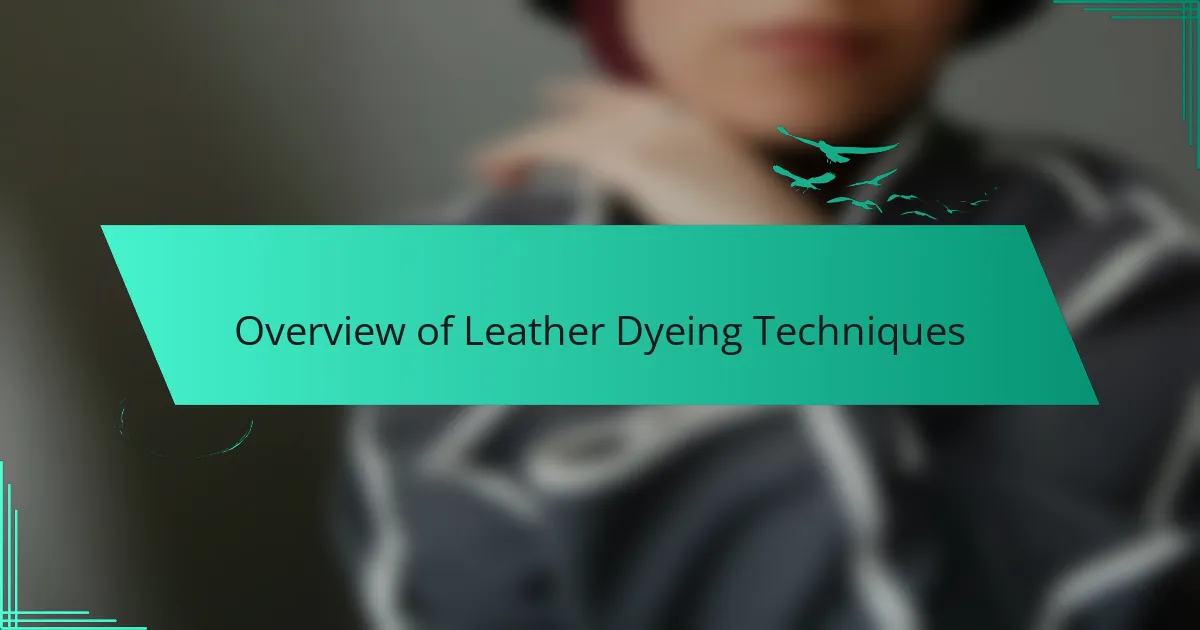
Overview of Leather Dyeing Techniques
Leather dyeing is a fascinating process that can revive old pieces and transform them into something strikingly new. I remember the excitement I felt when I dyed my first leather handbag; it was like watching a caterpillar turn into a butterfly right in front of my eyes. There are numerous techniques to consider, each offering a different finish and level of durability.
Here are some common leather dyeing techniques:
- Airbrush Method: Allows for a smooth, gradient effect and is excellent for detailed designs.
- Sponge Application: This is a simple technique that gives a more rustic look, perfect for a vintage feel.
- Brush Application: Great for precise coloring, enabling you to control the intensity and saturation.
- Dip Dyeing: Involves submerging the leather entirely for an even, thorough saturation.
- Heat Setting: After dyeing, applying heat helps set the color, ensuring longevity.
Exploring these techniques is not just about the process but also about the memories and creativity that go along with it. Each method can tell a unique story through the colors and textures chosen, reflecting one’s personal style and journey in fashion.
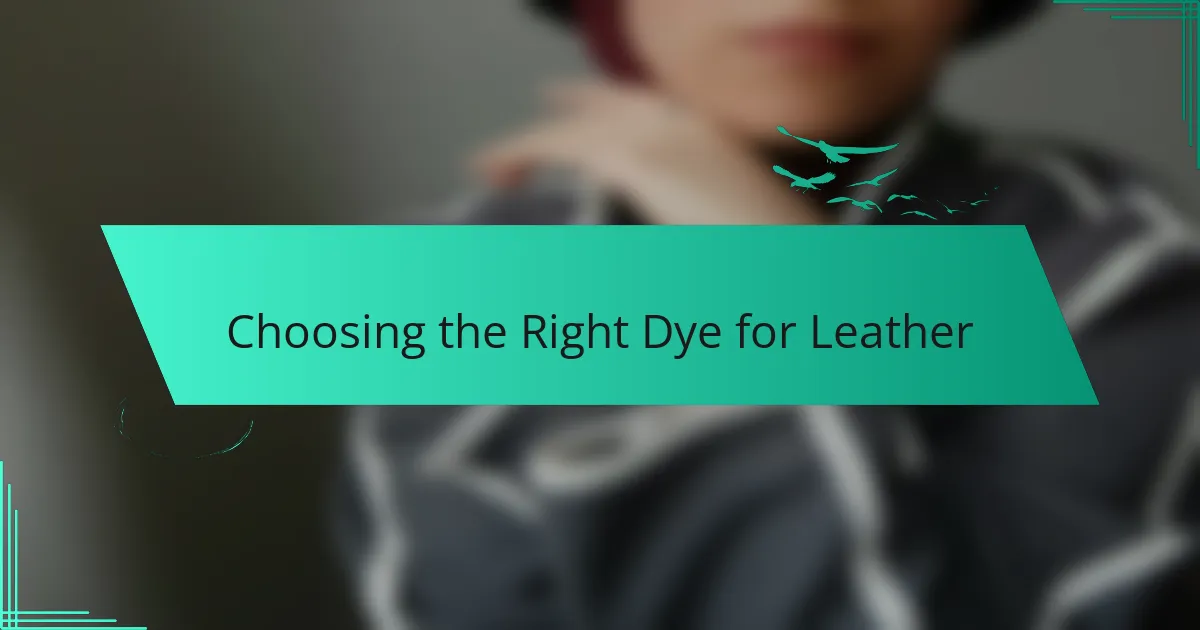
Choosing the Right Dye for Leather
Choosing the right dye for leather can truly make or break your project. I remember when I first tackled this, I opted for a water-based dye thinking it would be easier to work with. However, I found that it lacked the vibrancy I was hoping for; it turned out more muted than expected. After some experimentation, I discovered that alcohol-based dyes offer richer colors and better [censured], which really brought my vintage leather accessories back to life.
When selecting a dye, consider the type of leather you’re working with and the desired finish. Here are some key points to keep in mind:
- Look for dyes labeled specifically for leather to ensure compatibility.
- Think about whether you want a matte or glossy finish and choose accordingly.
- Test the dye on a small, inconspicuous area to see how it reacts before fully committing.
- Take note of the drying time; some dyes require longer curing periods, which can impact your project timeline.
- Don’t forget to protect yourself and your workspace—wear gloves and cover surfaces, as dye can stain permanently.
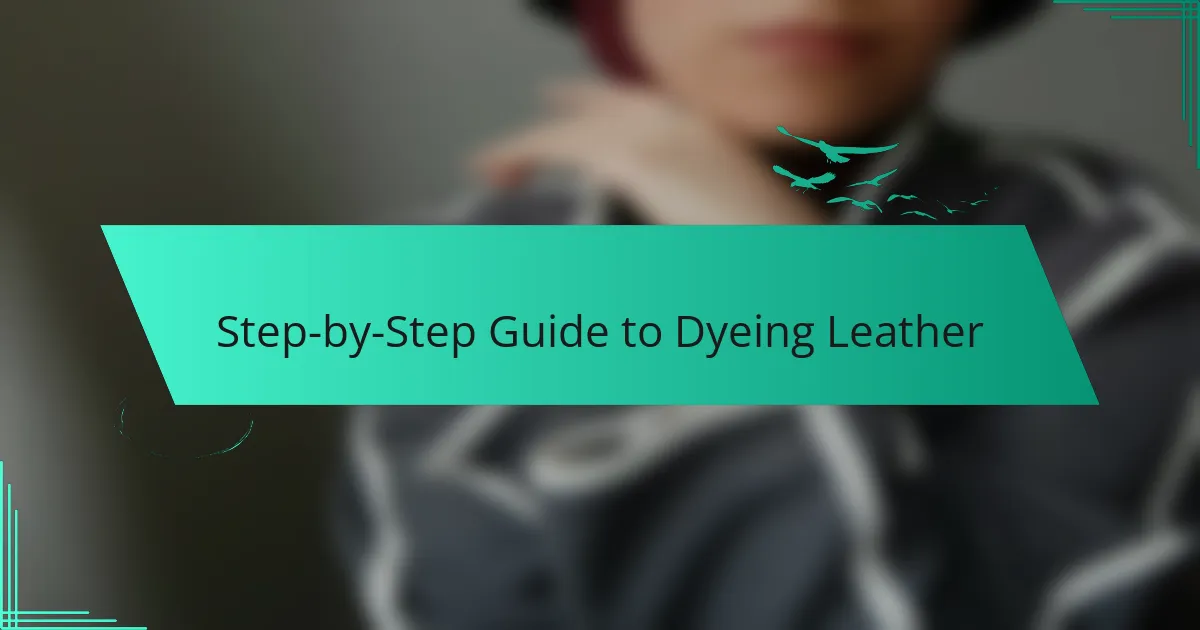
Step-by-Step Guide to Dyeing Leather
When dyeing leather, preparation sets the tone for success. I remember feeling a mix of excitement and nervousness when I first attempted this project. I laid out my materials—leather, dye, gloves, and a workspace covered with old newspapers. The anticipation of transforming an old piece into something stylish was exhilarating, but I also learned that a careful approach is essential for the best results.
First, make sure the leather is clean and free from any old finishes or dirt. Then, gather these supplies for the dyeing process:
- Leather item (accessory, bag, etc.)
- Leather dye (water-based or alcohol-based)
- Gloves (to protect your skin)
- Clean cloth or sponge
- Small container (for the dye)
- Brush or applicator (for easy application)
- Sealer (to protect the color once dry)
Taking these steps not only helps the dye adhere better but also allows you to enjoy the creative process more fully!
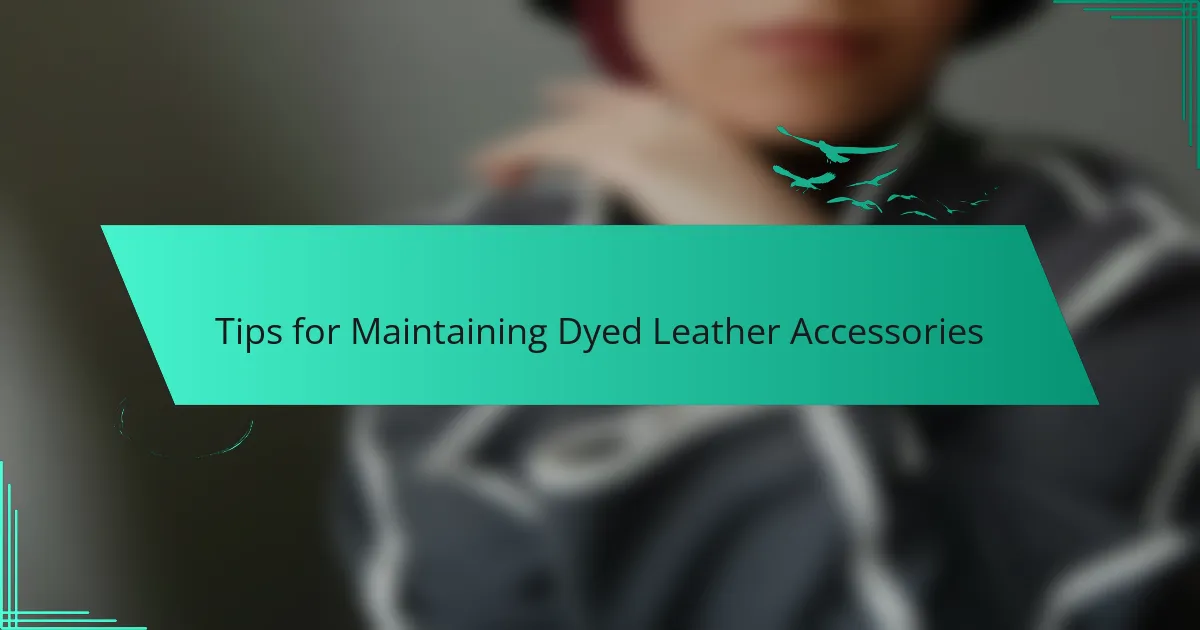
Tips for Maintaining Dyed Leather Accessories
Maintaining dyed leather accessories requires attention and care to keep them looking vibrant. One essential tip is to regularly clean the leather with a gentle, damp cloth. I’ve found that even a light dusting can make a huge difference. Plus, who doesn’t want their favorite handbag or wallet to look its best every day?
Conditioning your dyed leather is another key step I highly recommend. Just like our skin, leather needs moisture to stay supple and prevent cracking. I remember when I neglected this and ended up with a stiff and dull accessory. Using a leather conditioner helps restore its flexibility, often bringing back that rich color. It’s a simple task that can prolong the life of your cherished pieces significantly.
Lastly, be mindful of direct sunlight and harsh environments when storing your dyed leather items. I’ve made the mistake of leaving my favorite leather jacket in the sun, only to see the color fade over time. A cool, dry place away from direct light is ideal. Have you ever thought about how much easier it is to keep our accessories looking great than to recreate that same color and texture after it fades?
